We’ve talked more than once about the environmental problems caused by the overuse of plastics and the enormous amount of waste we generate in our daily lives.
We’ve also shared some tips for traveling without leaving a trace and reducing plastic usage, but this time, we’re focusing on the part of our travel essentials that generates the most waste: the travel bag.
Is it possible to take care of our hygiene without compromising the health of the planet? The answer is yes—or at least, we can try.
We’ll be honest: changing your hygiene habits can be challenging at first. We’re accustomed to specific textures and sensations, so switching to alternative products may initially feel strange or less effective (for example, using homemade toothpaste that doesn’t foam). But we’ve been through that adjustment phase, and now we’re fully used to our new routine.
If you’re aware of the amount of waste we generate daily and want to make a change, don’t miss the following tips.
The hairbrush we’ve carried in our toiletry bag for a long time is made of wood, and as you might guess, the results are virtually the same as with a plastic brush. The same goes for wooden combs.
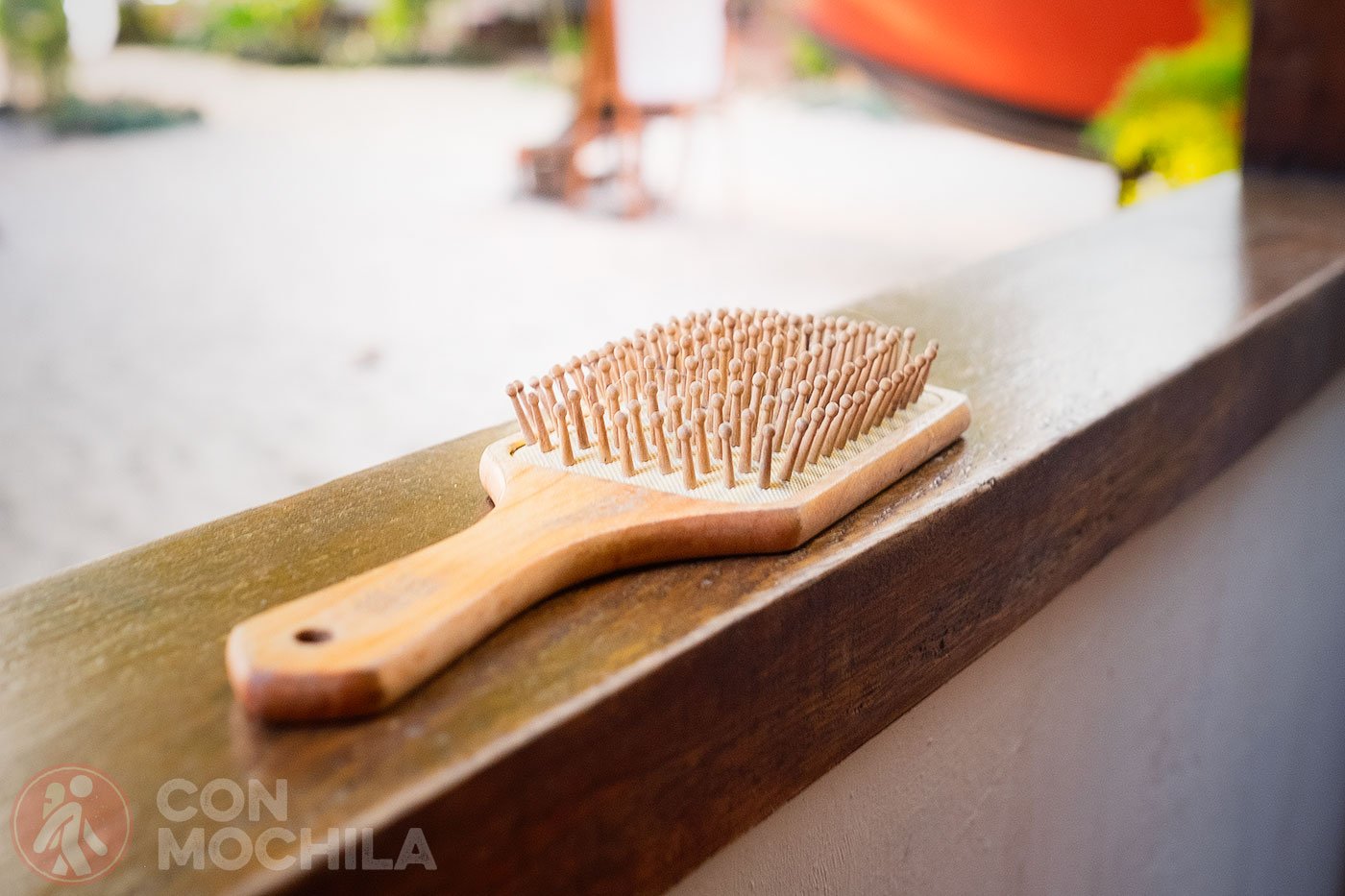
However, we were initially hesitant about switching to bamboo toothbrushes because of some negative reviews we’d read.
A few months ago, we decided to give them a try and bought a couple of Naturbrush bamboo toothbrushes. To our surprise, we haven’t had any gum issues, and we adapted to them very quickly. Now, we don’t even consider going back to plastic ones
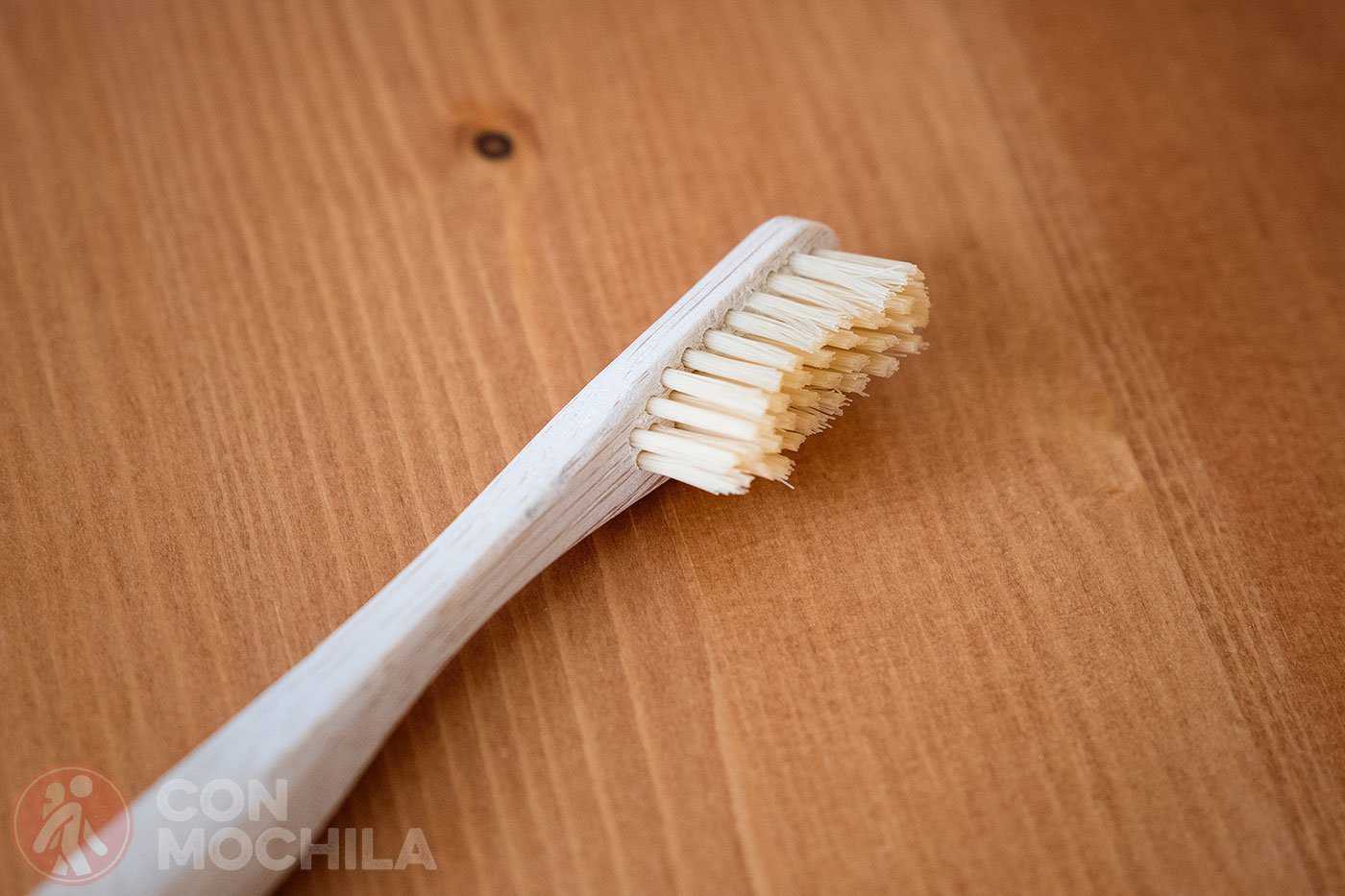
Why bamboo? Because it’s biodegradable. Think about how many toothbrushes a person uses in a lifetime. Do the math!
All of these products, in their liquid form, inevitably come in plastic containers. Some of these can be recycled, but many cannot, and there are places where recycling facilities simply don’t exist.
So why not avoid liquid products altogether in your toiletry bag?
Although you can find many recipes online, such as this one from Going Zero Waste, to make your own soap or shampoo at home, there are now plenty of stores selling these products, and they are usually from brands that don’t test on animals.
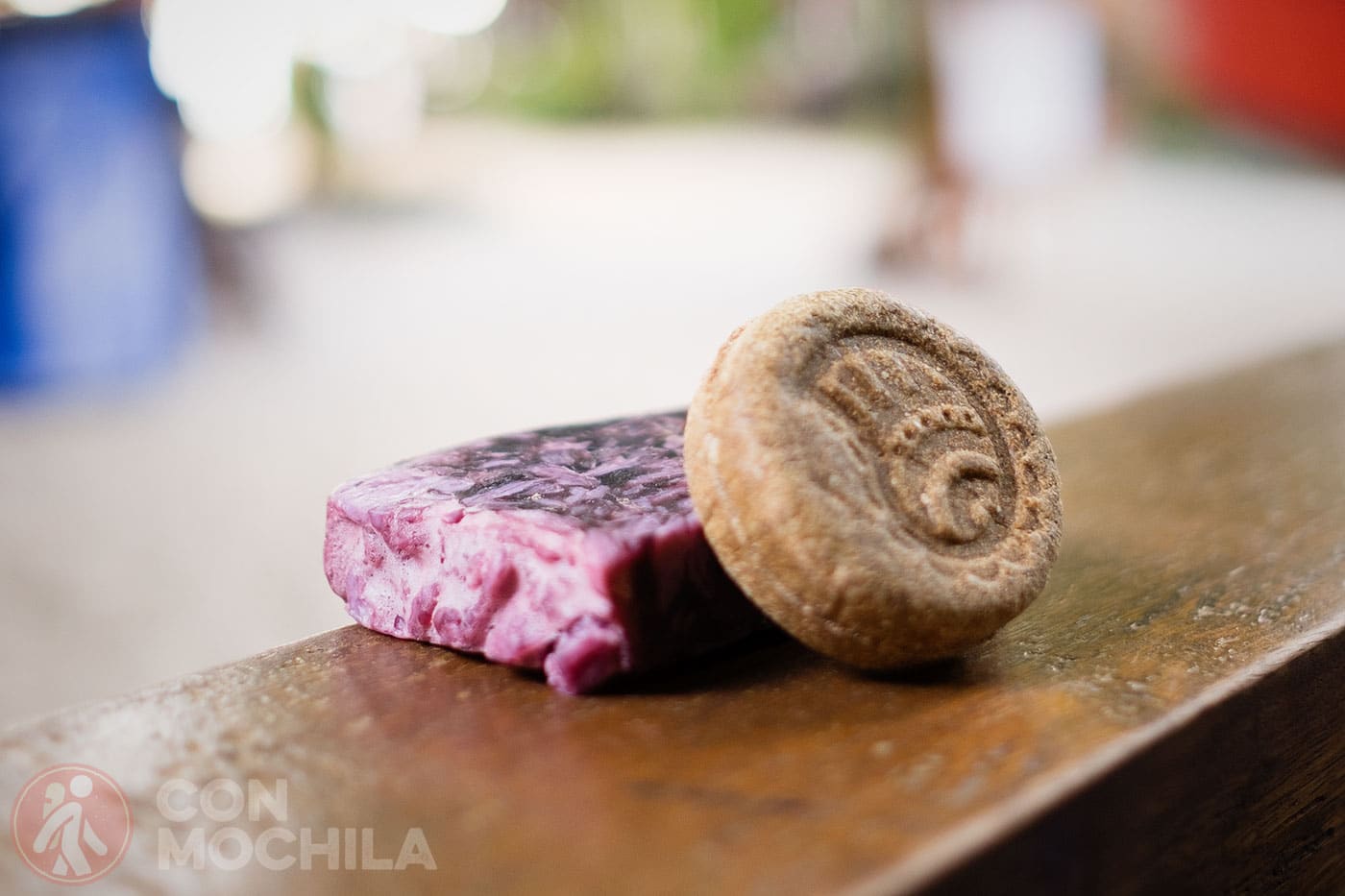
Using these products may feel strange at first, but you quickly get used to it, especially now that there is so much variety, allowing you to try different options.
Newer brands have improved the formulas to avoid the rough feeling that old-fashioned soap bars used to leave behind. For storage in your travel bag, you can use metal tins designed for this purpose or repurpose a flat conditioner bottle if you prefer.
The problem with toothpaste isn’t just its plastic packaging, which is often non-recyclable, but also that it contains microplastics that end up in the sea through our drains.
Countries like the UK and the US have already banned these microplastics, but in others, we still need to seek alternatives. So, what are the options? You can choose products from organic brands or make your own toothpaste at home.
Organic toothpaste products can come in powder form or solid tablets, like those from Lush (which at least uses recycled plastic bottles—better than nothing), or solid toothpaste from brands like Pachamamai or Ecco-verde.
If you have the time, ingredients, and interest, you can also experiment with making your own toothpaste (you can prepare it before starting your trip). Popular recipes often use coconut oil, such as this one from Trash is for Tossers, or white clay.
There are countless recipes for toothpaste. It includes fennel infusion, mint essential oil, white clay, a bit of oil, and salt.
The hardest part of homemade toothpaste isn’t making it (it takes less than 15 minutes, honestly) but adjusting to the texture and lack of foam. For us, it’s now a travel bag essential, and traditional toothpaste feels strange to us!
Creams pose several issues: their packaging is often non-recyclable, they are sometimes tested on animals, and they may contain palm oil derivatives (remember the environmental impact of palm oil production and how it devastates jungles and wildlife, especially orangutans).
Our alternative is oils, and we choose different types depending on what’s available in the area we’re visiting.
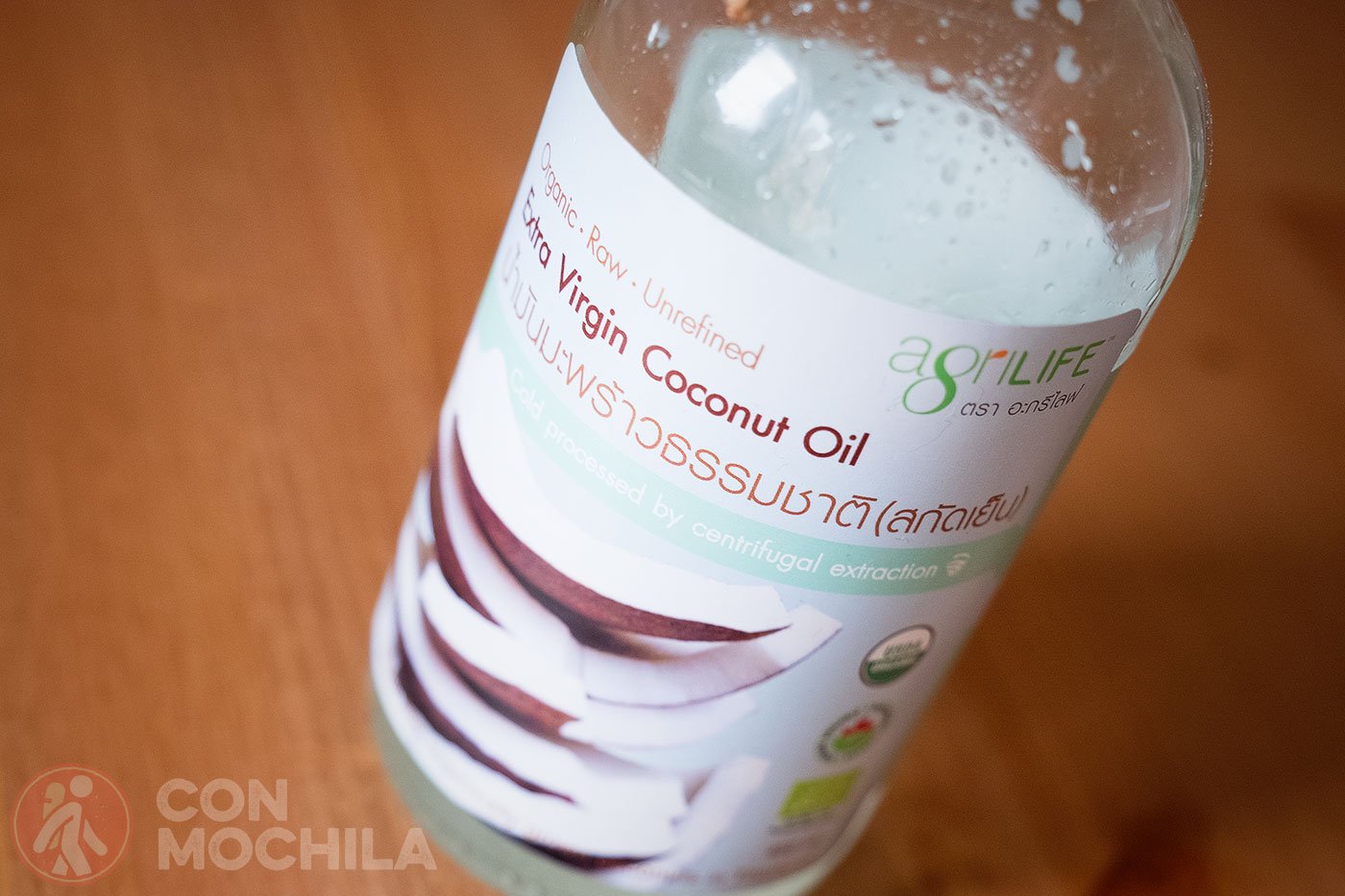
Currently, we’re using coconut oil, which we bought in Bangkok. The bottle is made of glass. Since carrying a large bottle isn’t practical, we transfer smaller amounts into travel-sized containers to save space in our bag.
I’ve always traveled with a hair removal machine (an old Silk-épil that, against all odds, is still working after more than 10 years). However, I understand it’s bulky, and many people don’t find it practical to carry in a backpack. On the other hand, disposable razors aren’t ideal either; they usually don’t last long, especially the cheap plastic ones.
So, what’s the alternative? If laser hair removal isn’t an option for you, consider razors with replaceable heads. This way, only the head is discarded, not the entire razor.
In our experience, these types of blades also last much longer than disposable ones.
The menstrual cup is no longer a mystery—it’s both economical and eco-friendly, as it can be used for several years. However, it’s not for everyone, and there are times when sterilizing it can be challenging (for instance, during multi-day treks). For those situations, consider eco-friendly tampons or pads as alternatives.
I won’t delve into the composition or effects of tampons on our bodies—it’s not something I’m particularly informed about—but consider this: you use them for just a few hours, and then how long do they take to degrade?
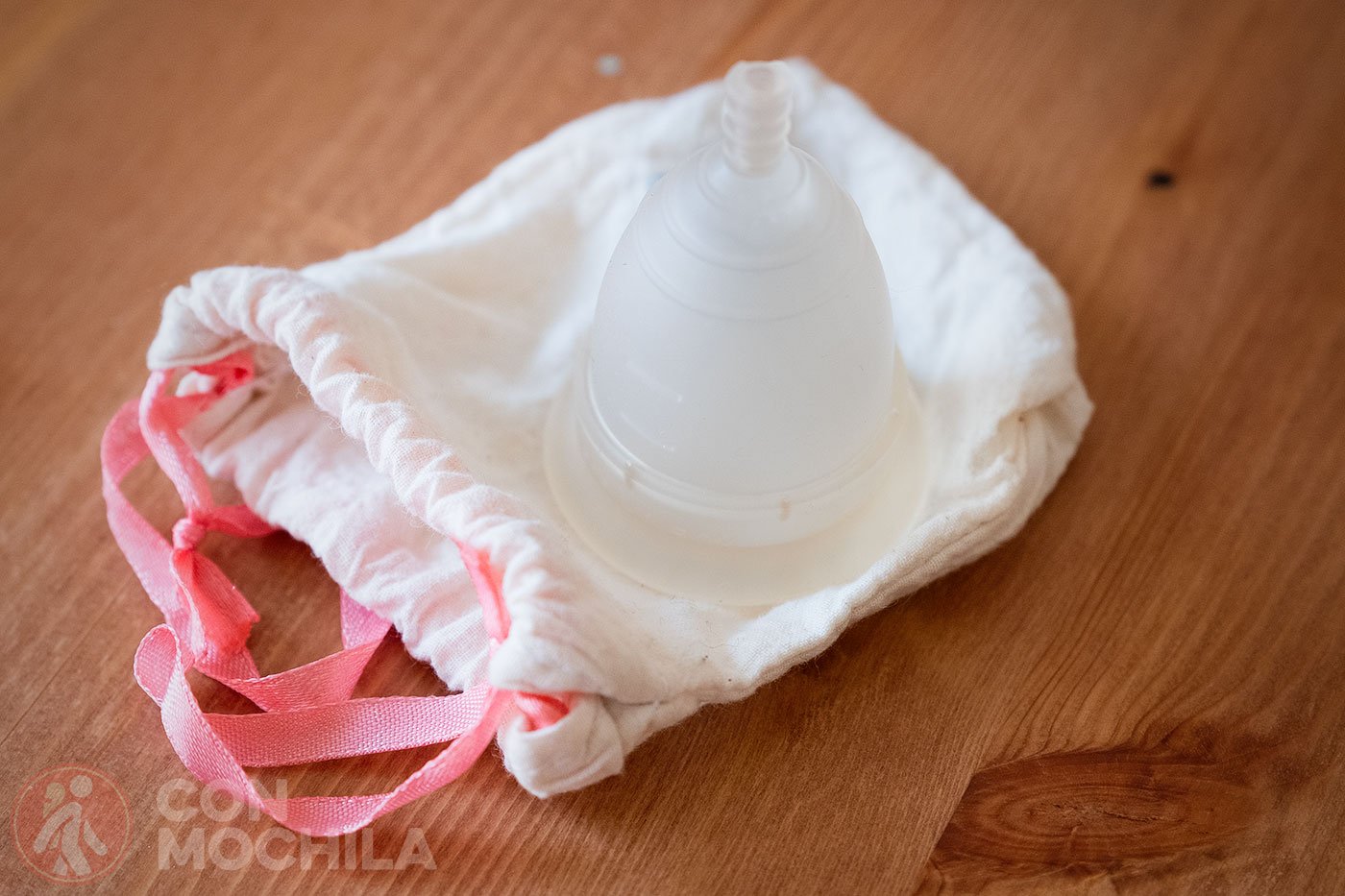
If possible, why not use tampons made from sustainable and biodegradable materials? Some brands produce tampons using organic cotton, free from chlorine, with cardboard applicators. If switching brands isn’t an option, you can at least avoid plastic applicators.
I always carry a menstrual cup in my travel bag and use it whenever I’m staying somewhere with the option to boil it for sterilization. Naturally, when this isn’t feasible, I still use tampons.
On Instagram, some of you have asked how to use a menstrual cup, so here’s a link to a video that explains it clearly.
It’s common to use cotton pads for cleaning your face or removing makeup. While cotton might not initially seem like a material with significant environmental impact, it is disposable and generates waste every time you use it.
Plus, how many will you need for your entire trip? Wouldn’t it be better to carry a small, reusable sponge instead?
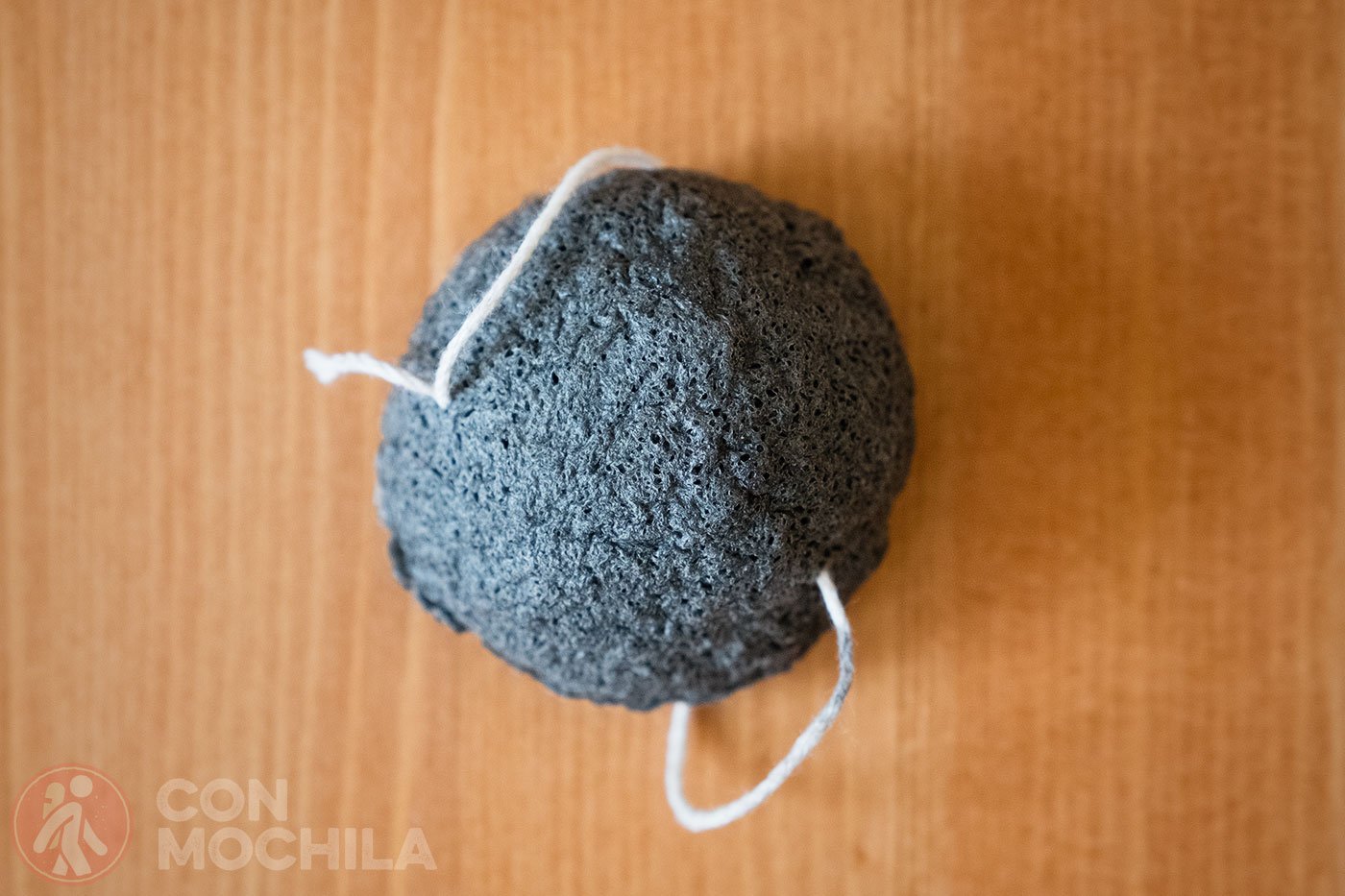
Konjac sponges have become very popular as they are plant-based and biodegradable. However, if you buy them online, they sometimes come in plastic packaging. The last time I bought one from a Natura store, it came in a recycled cardboard box.
Exfoliants often contain microplastics, a common but harmful ingredient. Some brands replace these with natural products like clay or salt. Alternatively, you can experiment and create your own exfoliants using oils, coffee grounds, salt, or other natural materials.
This article from The Zero Waste Memoirs includes a couple of recipes and other tips for a zero-waste facial routine.
This is the battle I’m finding hardest to win because I feel like my ears aren’t clean without using cotton swabs. However, I can’t stand looking at that box full of plastic sticks, and every time I use one, I imagine where it might end up, remaining there for years and years…
You’ve probably seen the widely shared image of a seahorse holding a cotton swab.
The good news is that if you’re not ready to give up on those “evil sticks” just yet, there are brands that produce them using more sustainable materials, that make them with bamboo and organic cotton.
I don’t know if you think this is a good option, but at least their environmental impact is much lower than plastic ones, and they’re biodegradable.
I can imagine what you might be thinking: this is a lot to take in, it’s not practical to carry a travel bag like this, and you’re not sure if you can get used to so many changes. We’ve been through this process too, and I can tell you that it’s not necessary to suddenly throw out everything in your travel bag and replace it with eco-friendly products.
Start with one thing. Try it out. Enjoy the process of experimenting and feel the relief of generating less waste. Once you’ve taken the first step, you’ll naturally be ready for the second.
We understand that during long trips, you might not be able to find everything everywhere. But some things are accessible, and it’s all about finding a balance between minimizing environmental impact and practicality. Don’t you agree?
And that’s all for today—but it’s far from everything. The number of products you can make at home is endless. I learned many recipes from the internet and found other interesting ones on Organicus.
If you’d rather buy ready-made products, there are sustainable brands and websites where you can find them.